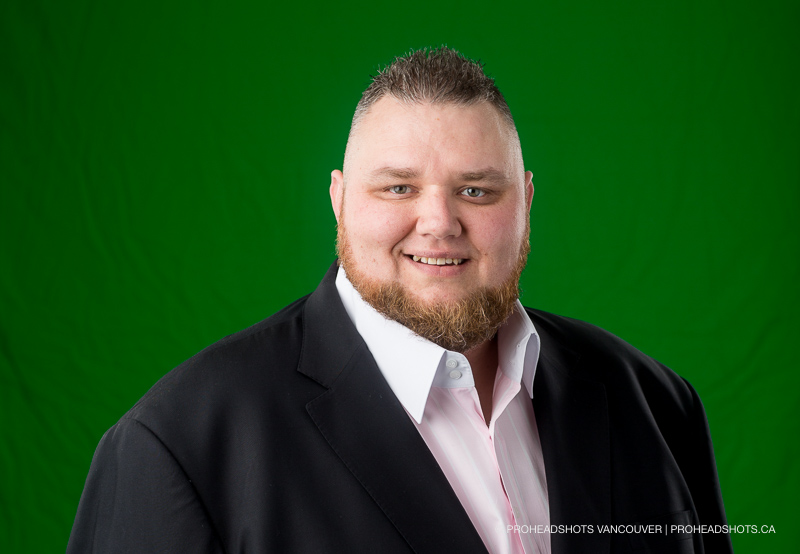Many of my clients ask for unique backgrounds for their headshots or group portraits that feature beautiful office spaces, venues, or homes. These backgrounds are popular because they draw attention and interest, but capturing business portraits in these spaces isn’t always possible for a variety of reasons (e.g. access, logistics, weather/lighting limitations, etc.). So another option is to produce green screen headshots (also known as Chroma key) in the studio and replace the backgrounds in post production.
Here is a sample of a business headshot I photographed in-studio for a local realtor.

After this was photographed, we chose a background of a beautiful residential space and placed his business headshot into the background with some Photoshop magic. The background was “blurred” to draw attention to my client. It also allows his graphic designer to drop in a logo and a title in the space on the right of the image. Alternatively, the photo can be cropped closer if just the head and shoulders headshot is needed for web advertising or business cards.

Another background was selected as well, and it was easy to place the headshot into a new space with little additional Photoshop editing required.

Some of the keys to making this all work are: the studio lighting placement, background selection, and colour grading. Knowing what the background will be in advance is important to making the final composite image look as realistic as possible.
Most of the backgrounds I prefer selecting have a brighter and/or generally muted colour palette, which helps to minimize the contrast between the headshot and the background. Knowing that the background is going to be generally brighter means adding some back lighting or rim lighting to the subject’s photo.
Colour grading or matching tones is another important ingredient. Compare the top image with the bottom one. Notice that the warmer skin tone of the top image fits better with the residential background due to the similar warmish tone.
Headshots from the green screen process rarely look as good as shooting in the actual space, but it’s an acceptable compromise when certain access or seasonal limitations keep us from shooting on location. One way to add fidelity to the image is to apply a tighter crop. This can usually help because it removes much of the background distraction, but includes just enough of the background to maintain context.

If you would like more information about producing headshots, group photos, or commercial images using this green screen technique, feel free to drop me a line!
